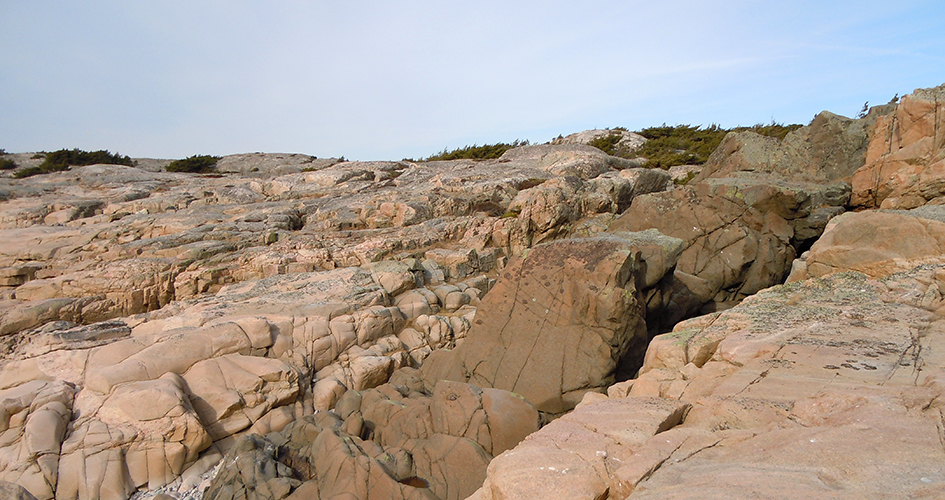 Foto: Stefan Husar
Foto: Stefan HusarGeology
Kosterhavet’s bedrock is unusually varied. Beneath the surface, waves and powerful currents have governed the appearance of the sea bottom and created a rich variety of different types of bottom sediment.
Sand and gravel occur within large areas. Flushed, bare rocky bottoms are very common in shallow areas, but also at greater depths as a result of the action of waves and currents. Running through the bottom of the Koster fjord is the spectacular Koster trench with its bare rock precipices.
Ancient gneiss
Koster and the archipelago west of the Koster fjord are made up of ancient gneiss. The most common is a grey, glittering gneiss formed about 1.6 billion years ago and a somewhat younger reddish-grey gneiss with elements of granite, which is often called granite-gneiss. Large movements in the earth’s crust have since disrupted the shape of the bedrock on several occasions. Over time the landscape has acquired its special fractured and folded appearance.
The Koster trench
The most spectacular geologic formation beneath the surface in Kosterhavet is the Koster trench. It is a fault fissure about one kilometre wide that was formed during at least two incidents in geologic history. The first time was about 920 million years ago when the Bohus granite was formed. The second occurrence was about 250 to 290 million ears ago. Movement of the inland ice sheet has since eroded the Koster trench to make it the way it looks today.
The sides of the Koster trench are made up mostly of bare rock precipices, while the bottom in the central part contains a thick layer of sediment composed mainly of clay. The distance to the bedrock of the Koster trench is about 450 m, but with a layer of sediment about 200 m thick, the water depth in the deepest place is 247 m today.
Long black streaks
Dark dolerite dykes are typical of the Koster archipelago. It looks as though someone has dipped a brush in paint and drawn a black streak directly across islands and skerries. Almost 700 of these dykes have been counted in the Koster archipelago. They were formed when dolerite magma from earth’s core was forced up into cracks in the earth’s crust about 1.4 billion years ago.
Partially weathered bedrock
Here you will find clear geomorphological formations and large sedimentary land areas affected by sand and shell calcium oxide. It is primarily because of the shell gravel and the open, sandy, dry land that so many special species can thrive in the Koster archipelago. Species that require land rich in lime do especially well.
Bohus granite
More heavily weathered Bohus granite, which is considerable younger than the Koster islands’ bedrock, is prevalent on the seacoast east of the Koster fjord. Bohus granite was formed about 920 million years ago, making it the youngest type of Swedish primary rock. About 270 million years ago there was a great deal of volcanic activity in the Oslo area, and at that time magma was forced up into cracks in the granite. Today we see traces of this in the form of north-south oriented dykes of dolerite and rhomb porphyry.
Share with your friends
Share this page with your friends on Facebook, X (formerly Twitter), Google+ and e-mail.





